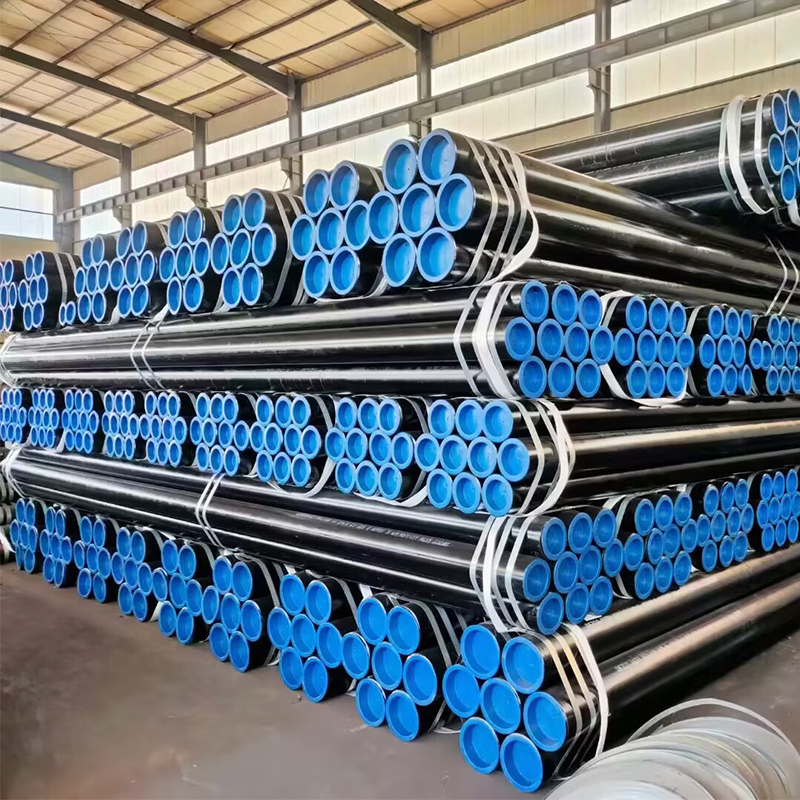Black Oil Pipe – Royal Steel Group
It is widely used in the manufacture of structural parts and mechanical parts, such as oil drill pipes, automobile drive shafts, bicycle frames, and steel scaffolding used in building construction mobile pictures, etc. Using petroleum cracking pipes to manufacture ring parts can improve material utilization, simplify manufacturing processes, save materials and processing man-hours, such as rolling bearing rings, jack sets, etc., have been widely used in steel pipes. Oil cracking tubes are also an indispensable material for various conventional weapons, and barrels, barrels, etc. must be made of oil cracking tubes. Petroleum cracking pipes can be divided into round pipes and special-shaped pipes according to the shape of the cross-sectional area. Due to the condition that the circumference is equal, the oil cracking tube has the largest area, and more fluids can be transported with circular tubes.


Structure
PI: It is the abbreviation of American Petroleum Institute in English, and it means American Petroleum Institute in Chinese.
OCTG: It is the abbreviation of Oil Country Tubular Goods in English, and it means oil special pipe in Chinese, including finished oil casing, drill pipe, drill collar, coupling, short connection, etc.
Tubing: Pipes used in oil wells for oil recovery, gas recovery, water injection and acid fracturing.
Casing: A pipe that is run from the surface into a drilled wellbore as a lining to prevent the wall from collapsing.
Drillpipe: The pipe used to drill a wellbore.
Line pipe: a pipe used to transport oil and gas.
Coupling: A cylindrical body used to connect two threaded pipes with internal threads.
Coupling material: the pipe used to make the coupling.
API thread: pipe thread specified in API 5B standard, including oil pipe round thread, casing short round thread, casing long round thread, casing partial trapezoidal thread, pipeline pipe thread, etc.
Special buckle: Non-API threaded buckle with special sealing performance, connection performance and other properties.
Failure: The phenomenon of deformation, fracture, surface damage and loss of original function under specific service conditions. The main forms of oil casing failure are: collapse, slippage, rupture, leakage, corrosion, adhesion, wear and so on.
Technical Standard
API 5CT: Specification for Casing and Tubing
API 5D: Specification for drill pipe
API 5L: Specification for Line Steel Pipe
API 5B: Specification for Fabrication, Measurement, and Inspection of Casing, Tubing, and Line Pipe Threads
GB/T 9711.1: Delivery technical conditions of steel pipes for oil and gas industry - Part 1: Grade A steel pipes
GB/T 9711.2: Delivery technical conditions of steel pipes for oil and gas industry - Part 2: Grade B steel pipes
GB/T 9711.3: Technical Delivery Conditions of Steel Pipes for Oil and Gas Industry Part 3: Grade C Steel Pipes
Imperial to Metric Conversion Values
1 inch (in) = 25.4 millimeters (mm)
1 foot (ft) = 0.3048 meters (m)
1 pound (lb) = 0.45359 kilogram (kg)
1 pound per foot (lb/ft) = 1.4882 kilograms per meter (kg/m)
1 pound per square inch (psi) = 6.895 kilopascals (kPa) = 0.006895 megapascals (Mpa)
1 foot pound (ft-lb) = 1.3558 Joule (J)